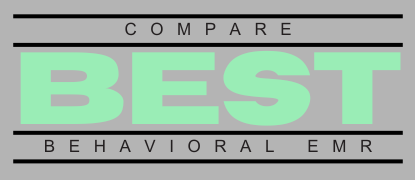Transitioning your behavioral health practice to a new EMR can feel daunting. You want streamlined documentation tools, easier practice management, and better patient care, but making the switch without disrupting your daily operations is a big concern. Fortunately, with the right strategy, your behavioral health EMR transition can be smooth, ensuring your clinicians remain productive and your patients continue receiving the quality care they rely on.
Why Practices Hesitate to Switch EMR Systems
Behavioral health practices often cling to outdated EMR platforms, even when they’re no longer ideal, due to fears around disruption. Common worries include:
- Staff resistance to new technology
- Potential loss of patient data or documentation
- Temporary dips in productivity and revenue
- Complexity and time required to train staff on a new system
However, sticking with a subpar EMR can negatively affect patient experience, provider efficiency, and revenue cycle management. Transitioning effectively to a modern behavioral health EMR is critical for long-term success and growth.
Steps to Ensure a Smooth Behavioral Health EMR Transition
By following these best practices, you can minimize disruptions and maximize the benefits of moving to a better-suited EMR platform.
1. Clearly Define Your Practice’s EMR Needs and Goals
Before choosing a new EMR, clearly outline what you need from your system. Engage your clinical, administrative, and billing teams to identify:
- Current pain points with your existing EMR
- Must-have features (e.g., customizable templates, integrated scheduling, telehealth capabilities)
- Reporting and analytics requirements
- Billing and revenue cycle improvements
Having clarity around your goals makes it easier to choose an EMR solution tailored specifically to your behavioral health practice.
2. Select an EMR Vendor Experienced in Behavioral Health
Not all EMR vendors understand the unique workflow and documentation needs of behavioral health care. Choosing a vendor specialized in behavioral health EMR and EHR solutions helps ensure your new system aligns seamlessly with your clinical processes and regulatory requirements.
Look for vendors that:
- Offer behavioral health-specific documentation templates
- Provide robust reporting and compliance tools tailored to behavioral health regulations
- Have a proven track record of supporting smooth transitions for similar practices
- Provide extensive, personalized training and support
You can learn more about selecting the right EMR vendor from resources like the Substance Abuse and Mental Health Services Administration (SAMHSA), which regularly provides guidance on behavioral health technology standards.
3. Develop a Thoughtful Implementation Timeline
Rushing into a new EMR implementation can lead to confusion and frustration among your staff. Instead, create a realistic and phased implementation timeline that includes:
- Initial training sessions and orientation
- Data migration planning and testing
- Gradual rollout to different teams or departments
- Ongoing feedback sessions to address challenges promptly
This phased approach reduces the risk of overwhelming your team and allows for adjustments as needed.
4. Prioritize Staff Training and Support
Your EMR transition’s success hinges on how comfortable your staff is with the new technology. Comprehensive training and ongoing support are essential. Consider:
- Providing dedicated training sessions tailored to different staff roles (clinicians, admins, billing staff)
- Offering accessible training resources, such as video tutorials and user guides
- Assigning internal EMR “champions” who can help colleagues navigate initial challenges and offer peer support
Ensuring your team feels supported and prepared significantly reduces productivity loss and increases adoption rates.
5. Carefully Manage Data Migration
Behavioral health practices rely heavily on accurate, comprehensive patient documentation. Any disruption or loss of data during migration is a major risk. To avoid this:
- Work closely with your EMR vendor to develop a clear, secure data migration plan
- Perform thorough data audits before, during, and after migration
- Run test migrations to identify and address any issues early
Ensuring seamless data migration protects both patient care quality and clinician productivity.
Measuring Success Post-Transition
After you’ve completed your behavioral health EMR transition, evaluate the success of your new platform. Monitor key performance indicators (KPIs) such as:
- Clinician documentation time
- Patient appointment scheduling efficiency
- Revenue cycle improvements (billing accuracy, claim acceptance rates)
- Staff satisfaction and EMR usability feedback
Regularly assessing these metrics helps you understand how effectively your new EMR supports your practice’s objectives and identify areas for additional training or optimization. Organizations such as the American Medical Association (AMA) also offer useful guidelines on measuring digital health effectiveness.
Conclusion
A successful behavioral health EMR transition doesn’t have to be disruptive or stressful. By clearly defining your needs, selecting a vendor experienced in behavioral health practice management, creating a careful implementation plan, prioritizing training, and managing data migration strategically, you can smoothly transition to an EMR that enhances productivity, efficiency, and patient care quality.
If you’re ready to identify the EMR solution best suited to your practice, request your free practice analysis. Our experts will evaluate your unique needs and recommend personalized EMR solutions to help your behavioral health practice thrive.
